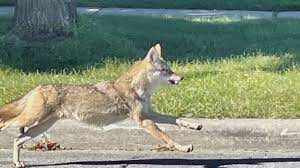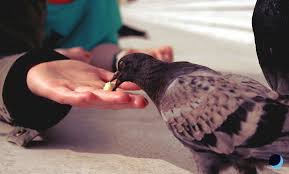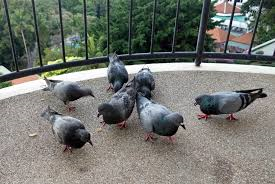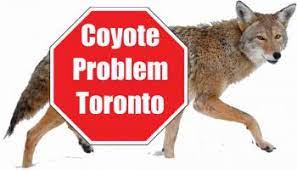 August 2023
August 2023
Coyotes are thriving as we continue to encroach on their space.
More people are reporting interactions with coyotes which are being forced to share their space with us. Some take evening walks carrying a baseball bat or wearing a “coyote vest” with spikes for protection.
Reasons are simple and unavoidable. Toronto, and other Canadian cities, are growing. Coyote living spaces are being taken over by residential housing, commercial buildings and industry. There is less space for them to retreat to.
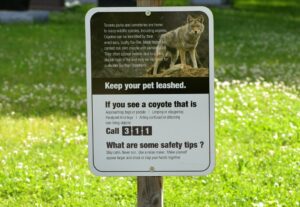 Coyotes are smart animals that adapt to city life. At one time they located in or near agricultural areas where food and shelter was available. Now it is cities where they find food and shelter. They build their dens under decks, in culverts, and other sheltered spaces. There is plenty of food in the form of rodents, carrion, fruits and vegetables. Dumpsters, garbage cans and waste discarded on the street or in parks provide a plentiful source of food.
Coyotes are smart animals that adapt to city life. At one time they located in or near agricultural areas where food and shelter was available. Now it is cities where they find food and shelter. They build their dens under decks, in culverts, and other sheltered spaces. There is plenty of food in the form of rodents, carrion, fruits and vegetables. Dumpsters, garbage cans and waste discarded on the street or in parks provide a plentiful source of food.
Growing cities are better habitats for coyotes. There is more food for them to eat and places for shelter. Many choose to feed them. They are less likely to be hunted and trapped. Overall, their survival rate has doubled. One of the few areas where coyotes choose not to settle is near airports.
Coyotes are territorial. They can be hostile toward pets although attacks on humans are rare. Lethal efforts to control them have failed. It is common that only the alpha (or lead) coyote breeds. When killed, the group disperses and more tend to reproduce. When trapped or hunted, they often produce larger litters to compensate.
In cities, there is a belief that coyotes are having smaller litters and delaying reproduction so as not to overcrowd their territories.
Coyotes like living in the city and are unlikely to move away. Encounters with them will continue to increase.
Safety Precautions
Avoid approaching coyotes, their den or their young, even if they seem tame, sick or injured.
If you encounter a coyote;
- Avoid turning your back on them and running or walking away. Maintain eye contact and slowly back away.
- Make yourself appear as large or imposing as possible. Flap your jacket or raise your arms.
- Be assertive and try to scare it away. Swing a walking stick, baseball bat or tennis racquet if accessible. Shine a flashlight. Throw a stone or ball in its direction.
- Make loud sounds. Stomp your feet or clap your hands. Use a whistle or horn if available. Yelling at the coyote also serves to alert other people nearby.
